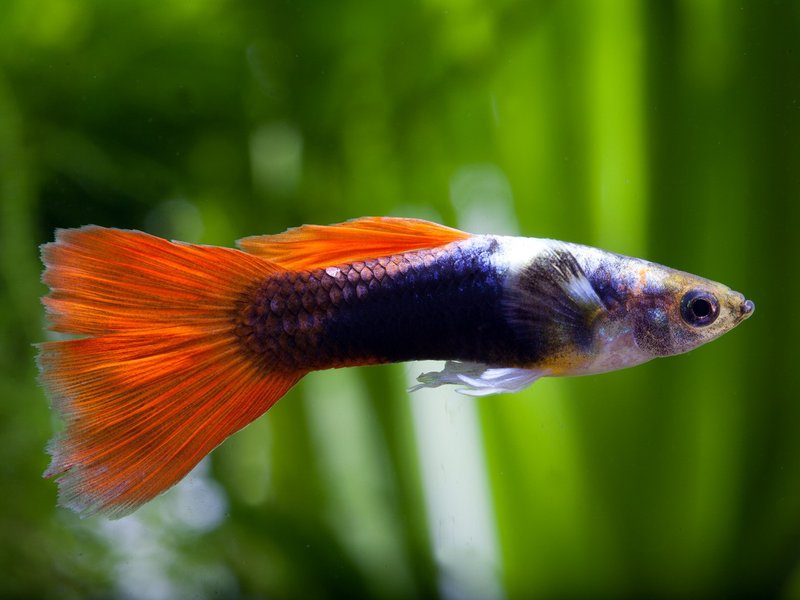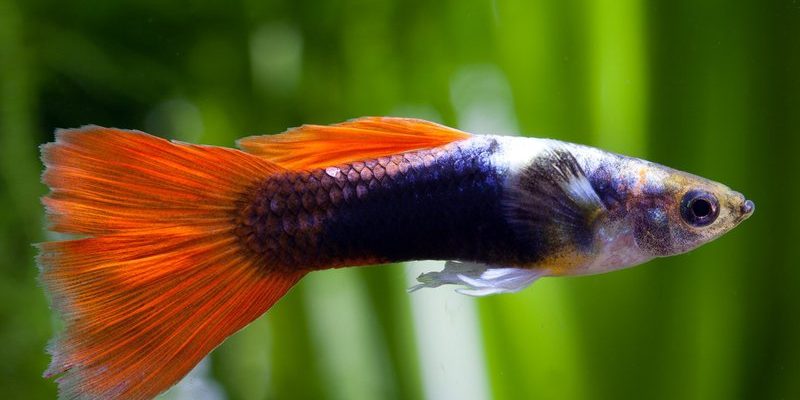
Guppy tapeworms, also known scientifically as *Bothriocephalus acheilognathi*, often have a connection to guppies, but they aren’t limited to them. These tapeworms are part of a larger community of organisms that work together to maintain the health of aquatic ecosystems. Let’s dive deep and explore what guppy tapeworms are, how they interact with their environment, and why they matter.
What is a Guppy Tapeworm?
To start, a guppy tapeworm is a type of parasitic flatworm. It resides in the intestines of various fish, particularly guppies. Picture this: the guppy is swimming along, and a tiny tapeworm hops on for a free meal. Though it might sound a bit gloomy, this relationship is quite common in nature.
Guppy tapeworms can grow quite long—up to several centimeters—making them a sight to behold when spotted under the microscope. They have a flat, ribbon-like body, which is perfect for attaching to the gut wall of a fish. This attachment allows them to absorb nutrients from their host, which can weaken the fish if the infestation is too heavy. Honestly, this may not sound great for the guppy, but it’s all part of the circle of life.
But don’t let the “parasite” label fool you! While guppy tapeworms can be harmful in large numbers, they also contribute to ecosystem dynamics. They serve as food for some species of fish and invertebrates. So, there’s more than meets the eye when it comes to their role in the aquatic food chain!
Life Cycle of the Guppy Tapeworm
The life cycle of a guppy tapeworm is fascinating and complex. It begins when fish consume larvae found in contaminated water or through infected prey. Once ingested, the larvae attach to the fish’s intestines and mature into adults. Here’s how the journey unfolds:
- Eggs: The adult tapeworms lay eggs, which are expelled in the fish’s feces.
- Intermediate Hosts: These eggs can hatch into larvae in water and find their way into smaller hosts, like insects or crustaceans.
- Transmission: When predators eat these intermediate hosts, they acquire the tapeworms, continuing the cycle.
Understanding this life cycle is crucial. It’s a reminder of how interconnected everything is in the ecosystem. When analyzing the health of an aquatic environment, the presence of guppy tapeworms can provide insights into the population dynamics of their fish hosts.
The Role of Guppy Tapeworms in Aquatic Ecosystems
You might be wondering why we should care about guppy tapeworms at all. They embody a crucial role in aquatic ecosystems. Here’s how:
1. Energy Transfer: By feeding on fish, guppy tapeworms help to regulate fish populations. When fish become too numerous, disease breaks out more easily, affecting the entire food web. By keeping fish populations in check, they aid in maintaining a balanced ecosystem.
2. Nutrient Cycling: When tapeworms die or shed segments, they release nutrients back into the water. This process helps enrich the sediment, supporting aquatic plants and other organisms. Think of it as a recycling system—waste from tapeworms becomes food for others!
3. Food Source: Interestingly, they also serve as a food source for various predators like larger fish. While they might not be the most glamorous part of the food web, their presence supports biodiversity.
By now, it’s clear that guppy tapeworms, despite their parasitic nature, contribute to the overall health of aquatic ecosystems. They remind us that every creature, no matter how small or seemingly unimportant, has a role to play.
Guppy Tapeworm and Soil Ecosystems
While we often think of guppy tapeworms in the water, you might be surprised to find that they have roles in soil ecosystems as well—indirectly, at least. Here’s how:
– Decomposition: When fish die in or near waterways, their bodies break down and enrich the soil. Guppy tapeworms, as part of the fish’s lifecycle, contribute to this process. Their presence indicates a healthy fish population, which is often reflective of nutrient-rich waters.
– Soil Fertility: Nutrients from fish that carry tapeworms can eventually wind up in the soil surrounding water bodies. Healthy amounts of nitrogen and phosphorus help in supporting plant growth, creating a vibrant habitat for various species—both in and out of the water.
– Biodiversity: The interactions between tapeworms, fish, and their environment highlight the interconnectedness of ecosystems. Healthy aquatic systems contribute to healthy soil ecosystems, which play a critical role in supporting terrestrial life.
Recognizing this indirect relationship helps illustrate the concept of ecosystems as a whole, where every participant is linked in some way.
Challenges and Considerations
Despite their ecological roles, guppy tapeworms also face challenges, especially in a world where human activities can disrupt ecosystems. Factors like pollution and habitat destruction can lead to imbalances. When fish populations decline, these tapeworms may struggle to find hosts, which can ultimately affect their life cycle.
You might be curious about invasive species. Certain types of guppy tapeworms can thrive in environments where they shouldn’t be, potentially overwhelming local fish. This can lead to reduced diversity and the decline of native species.
It’s essential to monitor these ecosystems closely. Remember, maintaining balance is crucial for the health of aquatic and soil ecosystems alike. When we protect one, we often protect the other.
In a nutshell, guppy tapeworms might not be the first creatures that come to mind when you think about ecosystems, but they play significant roles in both aquatic and soil environments. They help regulate fish populations, contribute to nutrient cycling, and serve as food sources for other creatures. Understanding their life cycles and impacts gives us a clearer picture of how interconnected our ecosystems truly are.
So next time you think about the little things in our environment, whether they’re creatures in the water or organisms in the soil, remember that every piece contributes to the bigger picture. Guppy tapeworms, while small and often overlooked, are essential players in the intricate web of life that sustains our planet. Who knew that such tiny creatures had such big roles to play?

